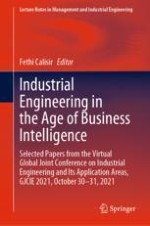2023 | Buch
Industrial Engineering in the Age of Business Intelligence
Selected Papers from the Virtual Global Joint Conference on Industrial Engineering and Its Application Areas, GJCIE 2021, October 30–31, 2021
herausgegeben von: Fethi Calisir
Verlag: Springer International Publishing
Buchreihe : Lecture Notes in Management and Industrial Engineering
